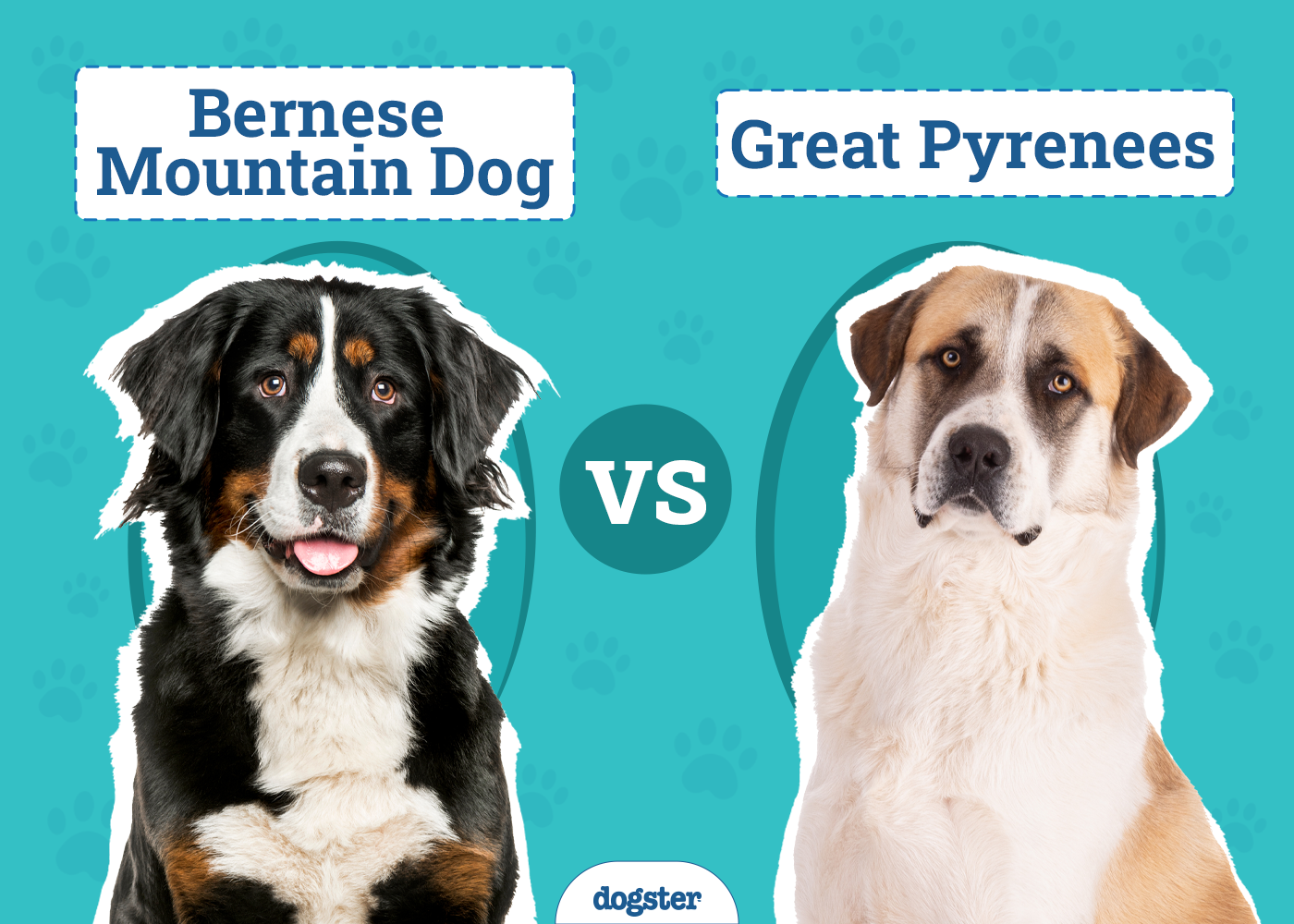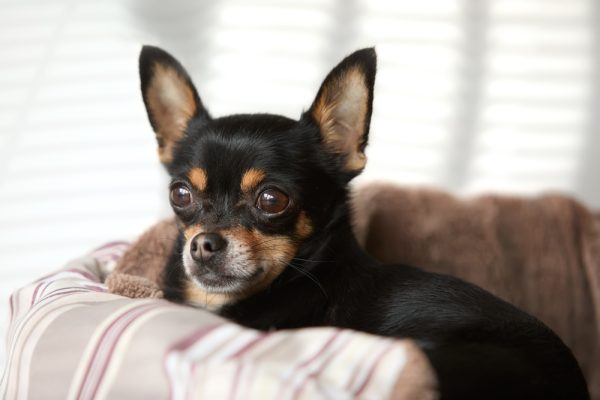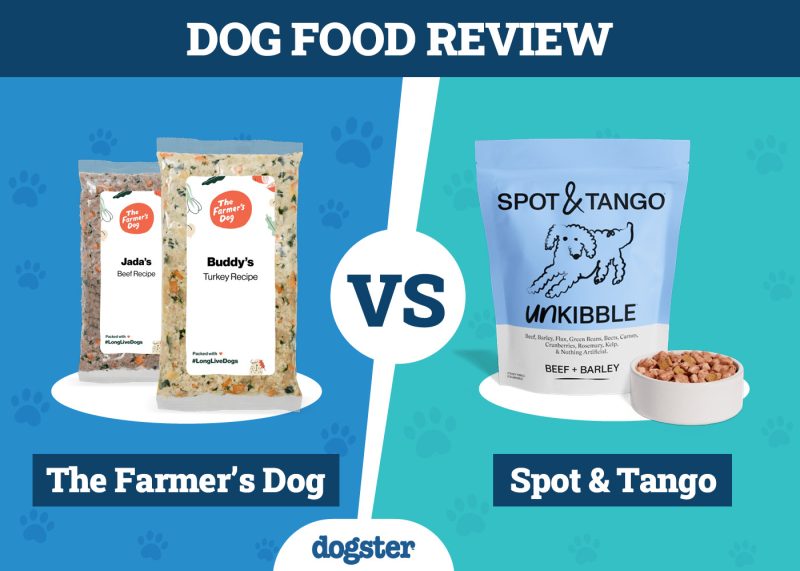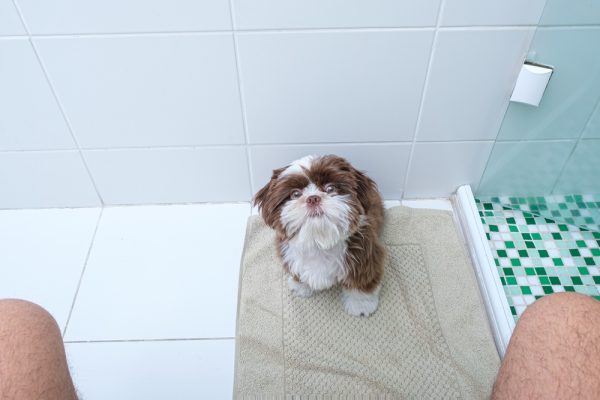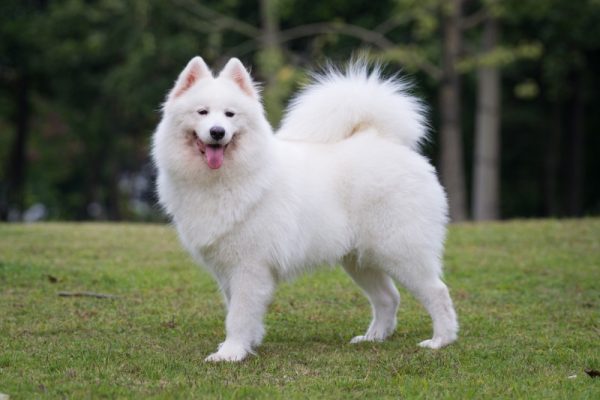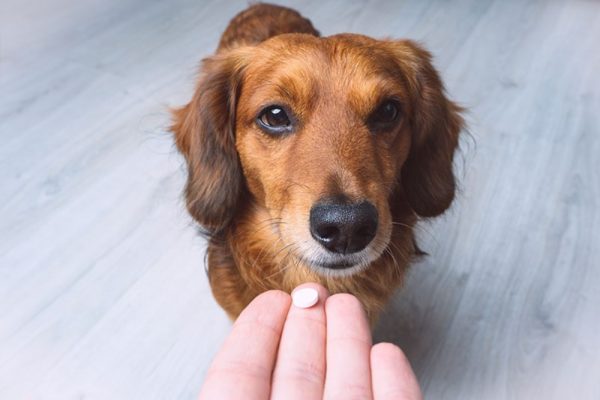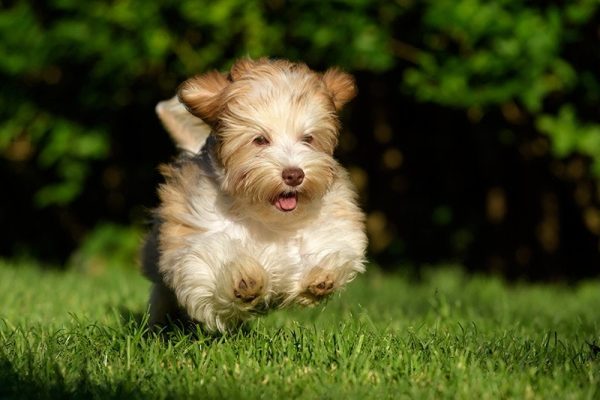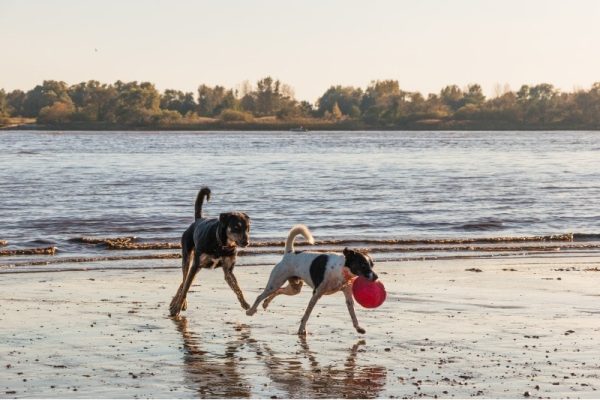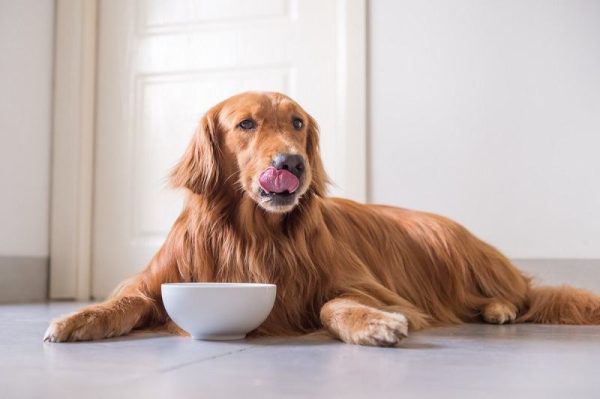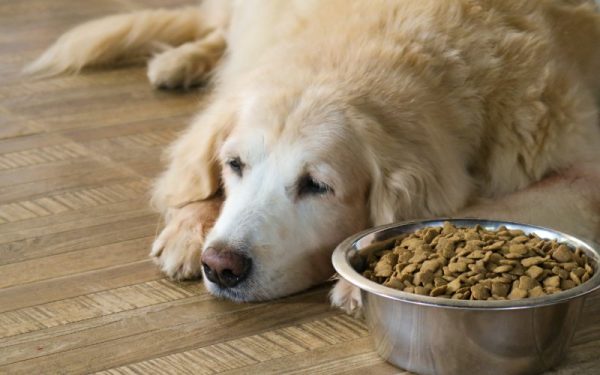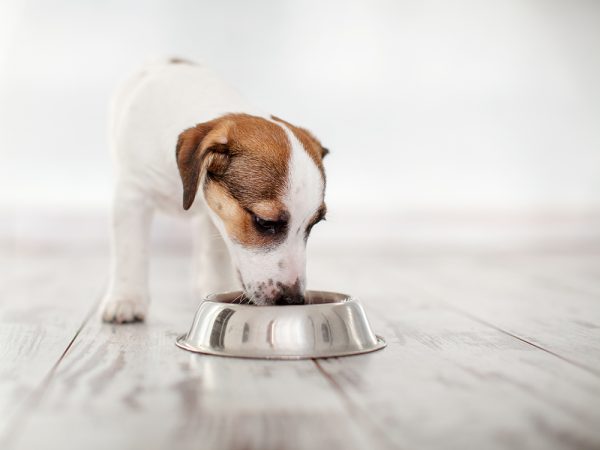In this article
If you’re looking for a strong, family-friendly, and loyal dog, you’ve probably got your eye on these two beautiful breeds: the Great Pyrenees and the Bernese Mountain Dog. Both breeds are intelligent, brave, and ready to go that extra mile for their owners. They have similar physical traits, too, and are roughly the same size and height. That said, the Bernese Mountain Dog is more playful and eager to please. In contrast, the Great Pyrenees mountain dog aren’t quick to follow commands.
So, which dog will be the perfect pet for your family? Should you pick the Bernese over the Pyr, or maybe the snow-white pooch will be a better choice? Let’s find the answers together!
Visual Differences
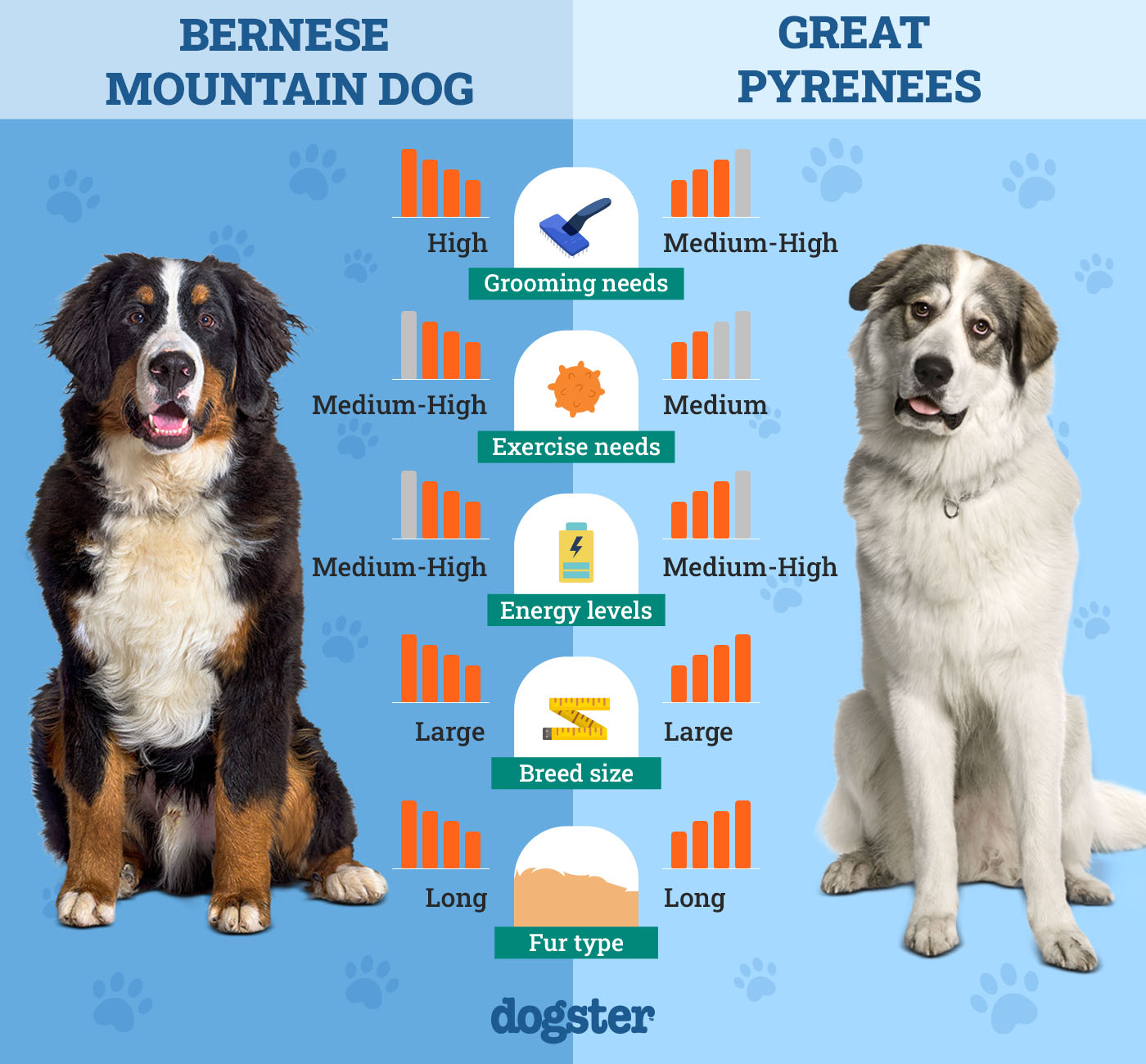
At a Glance
- Average height (adult): 23–27.5 inches
- Average weight (adult): 70–115 pounds
- Lifespan: 7–10 years
- Exercise: 1+ hours a day
- Grooming needs: High
- Family-friendly: Yes
- Patience with children: High
- Other pet-friendly: Yes
- Protective nature: Moderate
- Trainability: Very loyal, intelligent, eager to please
- Average height (adult): 25–32 inches
- Average weight (adult): 85–100+ pounds
- Lifespan: 10–12 years
- Exercise: 30–60 minutes a day
- Grooming needs: Moderate
- Family-friendly: Yes
- Patience with children: Moderate
- Other pet-friendly: Often
- Protective nature: High
- Trainability: Intelligent yet stubborn

Bernese Mountain Dog Overview
Smart, easy-going, and with a strong desire to make his family happy, the Bernese Mountain Dog is one of the cutest and lovable dog breeds on the planet. Bred to serve as a watchdog, the Bernese Mountain Dog can pull heavy stuff and protect livestock. If you have little kids, this guy will be able to haul them around in a cart! Sometimes called a Berner, the Bernese Mountain Dog is big, heavy, and ready to take on a challenge. It is a highly energetic, social animal.
Brought to Bern, Switzerland, more than 2,000 years ago by the Roman Empire, the Bernese Mountain Dog was established in 1912. It is one of the four Swiss dog breeds from Bern, and originally, it was used on farms as a herding and guard dog. A hardworking breed, it follows commands willingly and has enough stamina to keep up with a physically active family. The tri-colored coat, rust-colored spots above the eyes, and triangular ears make this dog stand out in the crowd.
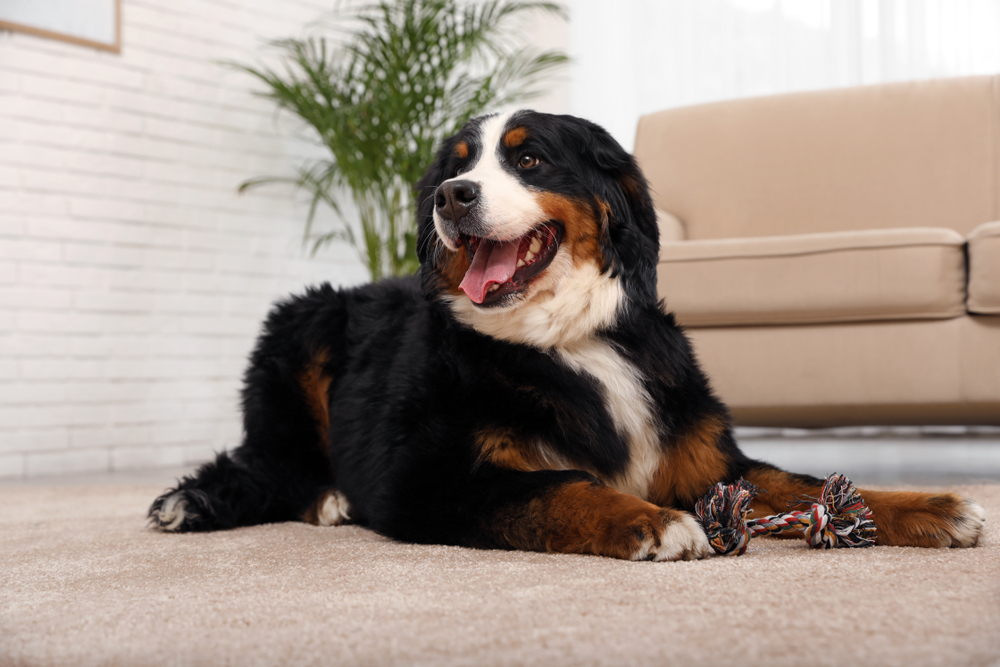
Personality/Character
Berners have a lovely personality. They quickly get attached to every member of the family yet only create a strong bond with one person. If that someone happens to be you, that makes you special! Caring by nature, they won’t be a threat to any of your loved ones, including little kids, despite their imposing size. Playing games, going out for a run, or just chilling in front of the TV: these dogs are up for anything you want to do but mostly prefer the indoors.
More good news— Bernese Mountain Dogs are very friendly toward other dogs and accepting of strangers. So, if you already have a pet dog at home, it shouldn’t be hard to introduce it to your Berner as a new member of the family. Of course, you’ll have to be there and supervise the dogs. We’re also happy to point out that Berners have an above-average adaptability level. They might be a bit shy initially, but they adjust quickly.
Training
Bernese Mountain Dogs are social and obedient, which makes them perfect for training. And the sooner you start, the better the results will be. Berners are fast learners, ready to work to please their owners. For a pup, 1–2 hours of training per day will be just right. This is important: since these dogs have very tender personalities, harsh training is NOT what you should go for. Their feelings are very easy to hurt.
So, instead of being overly strict, try to turn the process into a game. Berners are big fans of the outdoors. Do your best to spend at least a couple of hours a day with the Bernese Mountain Dog. While it can easily handle 5–8 hours of alone time once fully trained, if you neglect it for too long, that will make the Berner lonely, leading to unwanted consequences and behaviors. Crate training will help as well.
Health & Care
Berners are strong, sturdy dogs, but unfortunately, they only live for 7–10 years. Generally, they are healthy, yet you should still look for signs of dysplasia (hip or elbow), retinal atrophy1, and cancer. Bloating is an even bigger problem2. It’s very common among giant dog breeds and may have catastrophic consequences for your pet when left untreated. Watch out for the signs: is the Berner drooling and retching a lot?
Then you need to take it to a vet ASAP! You can avoid bloating by feeding the dog small portions throughout the day. Large-breed puppy food is also recommended. These dogs prefer cold weather, by the way, and are highly sensitive to overheating. As for the coat, to keep it in proper shape, groom it at least once in 2 weeks and brush it daily. Yes, Berners are heavy shedders! The nails, in turn, require special care: trim them regularly to help the dog move easier.
Frequent veterinary checks, vaccinations (twice a year), and bathing (every other week or so) should also be a part of the routine. But what about nutrition, you might ask? These dogs are prone to obesity. To keep them healthy, feed them every 12 hours and find the right balance between giving treats for good behavior and sticking to a low-calorie diet. And don’t forget about some fresh water!

Suitable For:
Tender, gracious, and easy to bond with, Berner is a big fan of spending time with his family in an active home. If you’re a first-time dog owner looking for a loyal, trainable dog to play with, the Berner will be exactly what the doctor ordered. It’s a great watchdog, too, and will scare intruders away while welcoming friends with an open heart. Folks with little kids will also appreciate this doggo’s loving, caring heart and patience toward children.
- Affectionate, very easy to train
- Friendly, happy to meet new people
- Patient, safe around children
- Beautiful tri-color coat
- Has a soft, sensitive character
- Tends to shed a lot
- Short lifespan

Great Pyrenees Overview
Just like the Bernese Mountain Dog, the Pyrenean Mountain Dog is a guardian. Originating in 1923, they were brought up to serve as a protector of livestock. The French call this dog a “Patou”. So, why are they called that, exactly? The name is derived from the Pyrenees Mountains that “sit” right between France and Spain—that’s where these majestic dogs were first bred. Bigger than most dogs, the Pyr has a thick coat that protects it from harsh weather conditions.
More than that, it’s incredibly powerful and can easily scare blood-thirsty predators like wolves away. Initially, the French-bred Pyrs to survive the snowy mountains and to keep their sheep safe. That’s why they’re so protective and not afraid to take on burglars that are twice their size. On average, the Great Pyrenean mountain dog’s size is impressive, weighing 100 pounds and up to 32 inches in height.
If you love strong, loyal, majestic dogs, it will take one look at the snowy-white coat and intelligent, noble eyes to fall in love with a Pyr. Mostly calm and friendly, they are quick to respond to a threat and are equally fast and strong when taking down an enemy. Training them will take effort, though. Plus, the Pyrs have a slightly different character compared to Berners. Here’s a more detailed breakdown.
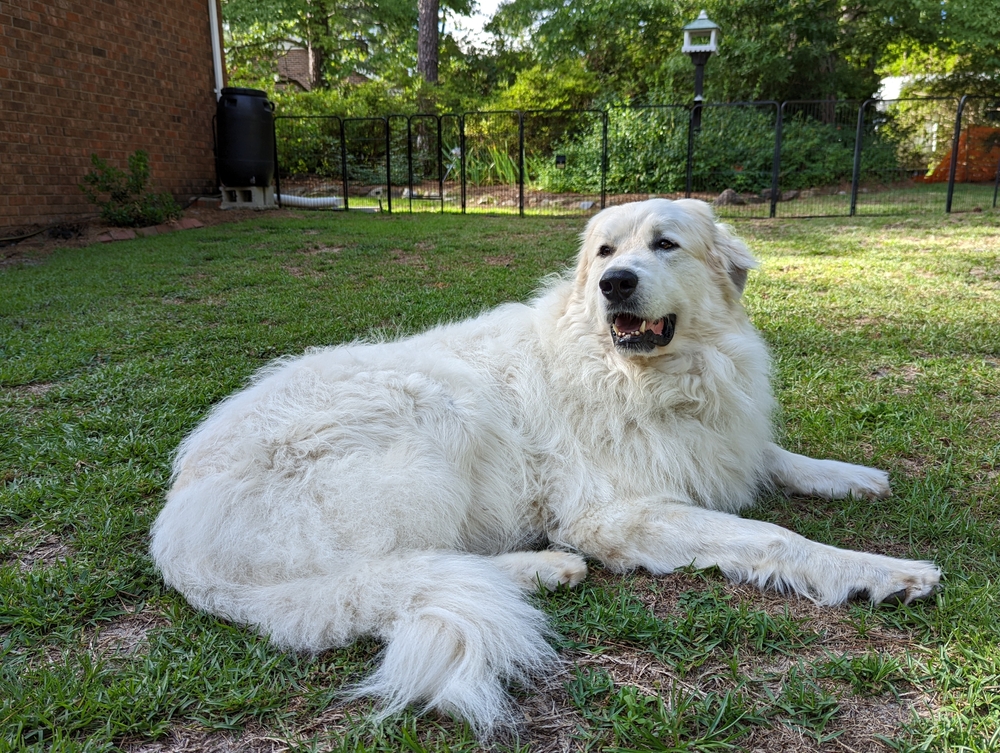
Personality/Character
Pyrs are vigilant, courageous, and just as affectionate as Bernese Mountain Dogs. However, you shouldn’t leave them alone with children (unless properly trained), as their tolerance level is average at best. Relationships with other dogs won’t always be easy to establish, either. Again, to make sure everything goes smoothly, you’ll need to act as a supervisor. The Great Pyrenees is much more protective, though, and does a better job as a guard/watchdog.
Now, it might react to squirrels or raccoons running around a bit too aggressively. Plus, strangers won’t always get a warm welcome. But, if these dogs see that the owners are friendly and kind towards new people, they’ll follow their example. A quick note: Pyrs aren’t the most playful dog breed—far from that. While they do like tug-of-war and other games, resting on the couch is often a better “activity” for them. They also need some alone time now and then.
Training
Since the Pyrenees was mostly bred to be a self-sufficient, independent dog that leads and protects livestock, it’s not nearly as submissive or compliant as the Bernese Mountain Dog. The standard training techniques that are used to make four-legged guardians sit, stay, run, and perform other tricks won’t “impress” this guy. Indifference—that’s the first thing that you’ll encounter when trying to train a Pyr. There will be certain responses from it, of course.
But the dog will be slow and not very unenthusiastic. On the bright side, it’s still possible to make it more adjusted to society through positive reinforcement. Just like Berners, Pyrs are best to be trained while they’re still pups. In any case, please remember that this breed is less active than most dogs. Its #1 job is to protect. The big size and aggressive stance are enough to guard the flock. To keep it happy, you’ll only have to exercise with the Pyrenees for 30–60 minutes a day, or even less.
Health & Care
Like most dogs, Pyrs often suffer from hip and elbow dysplasia, along with luxating patellas3. Common health issues also include neuronal degeneration and eye disorders. In addition, you need to always watch out for signs of gastric dilatation-volvulus (bloating) that twists and inflates the poor thing’s stomach. Make a habit of chopping your Pyr’s meals into tiny bits and never letting the dog consume food in large portions.
Pyrs are the proud owners of thick, dirt-resistant double coats. That’s why their growing needs aren’t as high as you might expect. They shed in spring and a thorough brushing once a week or so will keep them in shape. Use a slicker or pinbrush for that. To eliminate discomfort and help the dog stay on his feet, don’t forget to trim the nails. Lastly, brush your pet’s teeth using dog-only toothpaste. Follow this health and care routine, and the Pyr will live for up to 12 years.
The Great Pyrenees mountain dog doesn’t eat quite as much as a dog of his size usually does. So, low-calorie, high-quality food is recommended: 4–6 cups of dry food should do.
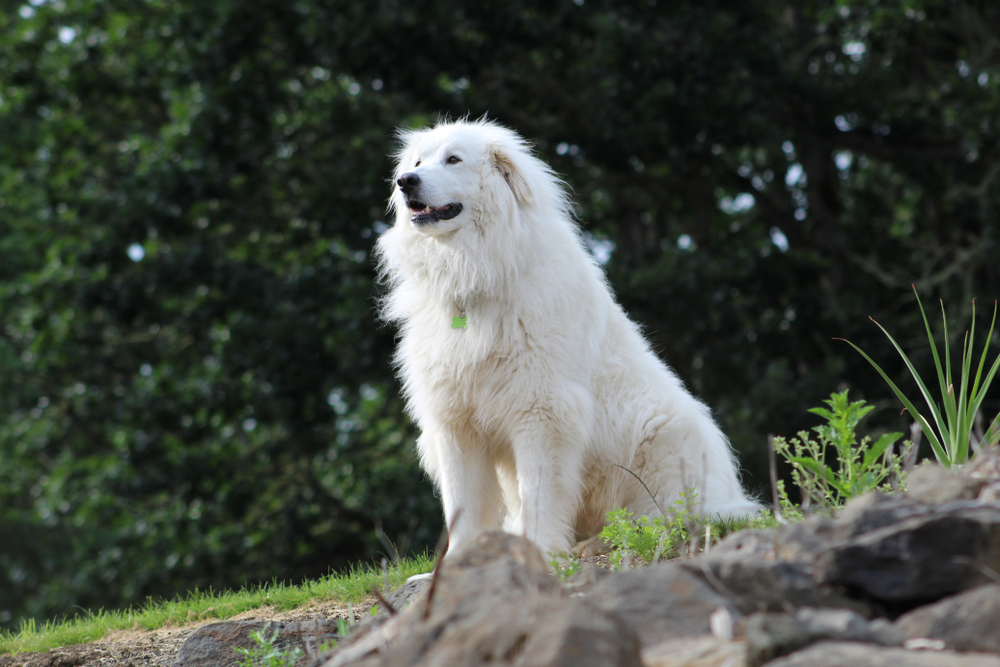
Suitable For:
The Great Pyrenees is not to be messed with! This strong, agile, and highly protective beast is a perfect guard dog. It has a loud bark and a muscular body and will easily keep critters and burglars alike at bay. If you have a big farm to protect from intruders, the Pyr will get the job done without breaking a sweat.
It’s also an affectionate dog that bonds with his owners. You will have to put in long hours in training, though.
- Highly protective by nature
- A perfect guard dog
- Moderate grooming needs
- Above-average lifespan
- Strong-willed: hard to train
- Barks a lot, can be aggressive to strangers

Which Breed Is Right for You?
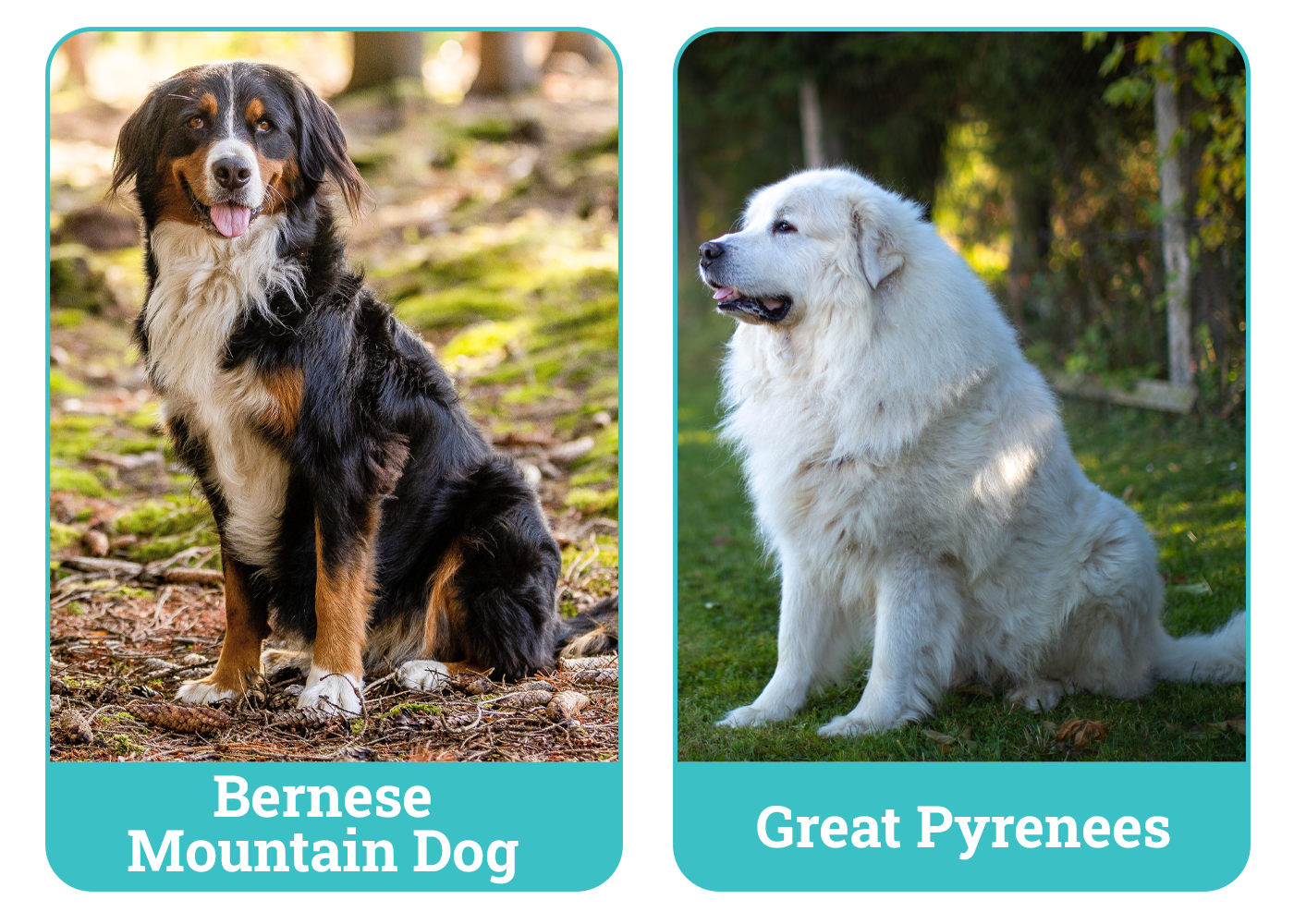
If this is your first dog, you’ll probably be better off with the Bernese Mountain Dog. It’s easier to train and follow commands willingly. On top of that, it’s friendlier compared to the Great Pyrenees: it will be more welcoming to strangers and won’t bark as often. The Bernese Mountain Dog is safer around children, too. You won’t have to always be on your toes to keep the kids from harm’s way. That said, the Pyr is more independent, headstrong, and a superior watchdog.
With this breed, you can sleep better at night knowing that your family is safe. Pyrs instantly recognize potential threats; the same can’t be said about Berners. Another big pro: Pyrenees take less effort to groom and value their alone time.
So, it all comes down to what you’re looking for at the moment. If a loyal guard dog is what you need, go with the Pyr. But if your heart desires an adorable, playful, and easy-to-train doggo, the Bernese Mountain Dog is your best bet!
See also:
- Bernedoodle vs Bernese Mountain Dog: Which Should I Choose?
- Dogs Similar to the Bernese Mountain Dog (With Pictures)
Featured Image Credit: Top – Shayna Douglas, Unsplash | Bottom – Tychon Krug, Pexels
